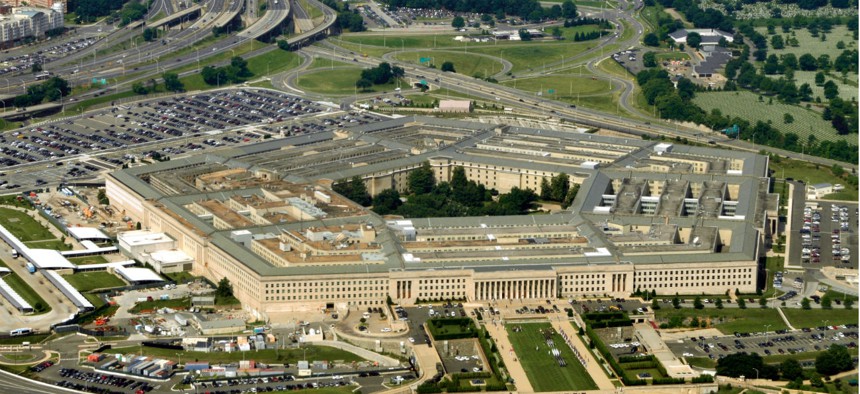
Shutterstock.com
OPM Cuts Security Clearance Backlog in Half, But Processing Delays Spell Trouble for Pentagon
The National Background Investigations Bureau is barreling through the backlog of clearance applications as the Defense Department prepares to take over the function in October.
As the Office of Personnel Management finalizes plans to turn over security clearance processing to the Pentagon in October, Charles Phalen, director of OPM’s National Background Investigations Bureau, said critical improvements have already been achieved.
Phalen, who is also acting director of the newly formed Defense Counterintelligence and Security Agency, briefed government and industry stakeholders last week at the National Industrial Security Program Policy Advisory Committee meeting. His brief remarks focused on the breadth of the mission he is about to take over. He noted that the work being done today is a continuation of efforts that began months ago. The focus is less on starting up the new agency and more of “our commitment not to mess with that momentum,” said Phalen.
“I would argue that intellectual day one for this organization was months and months ago,” he continued.
Phalen thanked Defense Security Service Director Dan Payne, who is now retiring as the DSS mission dissolves into the new agency, which is taking on the vetting, technology protection, counterintelligence and background investigations mission.
A critical aspect of Day One for DCSA, which is set to take over the National Background Investigations Bureau’s responsibilities at the start of the fiscal year, is the movement of more than 3,000 personnel currently assigned to OPM. On Oct. 1, those employees will become Defense Department employees. The processes needed to ensure a smooth transition for that geographically dispersed workforce has been in process for months, Phalen said.
“We’re taking advantage of synergy, energy, and commonality putting this mission together,” he emphasized.
An Unsolved Problem
Improvements in the security clearance backlog continue to be a bright spot for NBIB/DCSA. Phalen noted the backlog today stands at 386,000. A year ago it had reached a high of 725,000 pending investigations, prompting congressional scrutiny, which ultimately led Congress to transfer the background investigations mission from OPM to the Pentagon. Backlog numbers became the big stick used by those at the Defense Department who sought to wrest control of investigative work back from OPM (the Pentagon had previously conducted such investigations before the responsibility was shifted to the governmentwide personnel agency to improve efficiency).
But while the backlog figures have improved, an even more important figure has not—security clearance processing times.
Current security clearance processing times for Defense and industry applicants are 422 days for a Top Secret security clearance and 234 days for a Secret clearance. That’s a slight improvement for TS investigations, but shows Secret processing times the same as the previous quarter.
“We are seeing continued improvements, but it’s not where we want it to be and not where it should be,” said Phalen.
The length of time it takes to conduct investigations presents another critical challenge for Defense in the near future.
With initial investigation timelines showing no improvement, periodic reinvestigation times are actually getting worse. Secret reinvestigation times (updating investigations for those who have already obtained clearance) skyrocketed from 289 days in the first quarter of 2019, to 446 days in the second quarter. Top Secret reinvestigation times were at 582 days for the second quarter of FY2019. Documents released prior to the committee meeting noted that the need for more intensive fieldwork for those Secret clearance PRs caused the spike. But adjudication timelines are also a significant reason for the increased processing times, with PR adjudication timelines increasing dramatically in the second quarter of fiscal 2019.
Focus is on enrolling more clearance holders into the government’s continuous evaluation program, rather than improving periodic reinvestigations. Thus far in fiscal 2019, 36,586 periodic reinvestigations have been transitioned into continuous evaluations. But the number enrolled still represents only around one-third of the cleared population.
One of the key issues with delayed periodic reinvestigations is the clearance limbo created for candidates who have been submitted for vetting but await a final determination. While they should be able to change jobs or accept a new cleared position with a government agency, many organizations fail to recognize the security clearance because it is technically “out of scope.” This issue was recently highlighted in a white paper by the Intelligence and National Security Alliance. Their report focused on the price the government pays when security clearance reciprocity is ignored. The report estimated as much as 10% of the cleared contractor labor force is idle at any given time due to issues with reciprocity.
“If I’m a program manager in a big, private sector defense or intelligence firm and I have these invaluable people with a clearance, these women and these men who have great skills, I can’t just let them go,” said Charlie Allen, principal at the Chertoff Group and chair of the INSA Security Policy Reform Council. “I have to put them on overhead. And eventually that is written into the contract. If you have a one huge $400 million contract and you have to hold these people because you can’t immediately put them on the job, that adds up. And it is something that it should be solvable.”
The government has made significant progress on the backlog, and in large part due to relatively minor process changes. But those changes will have little positive effect for many. Improvements in security clearance processing times, increased enrollment in continuous evaluation, and a path forward for security clearance reciprocity are next steps toward building upon current successes. And it will take more than a new agency to do the heavy lifting.






